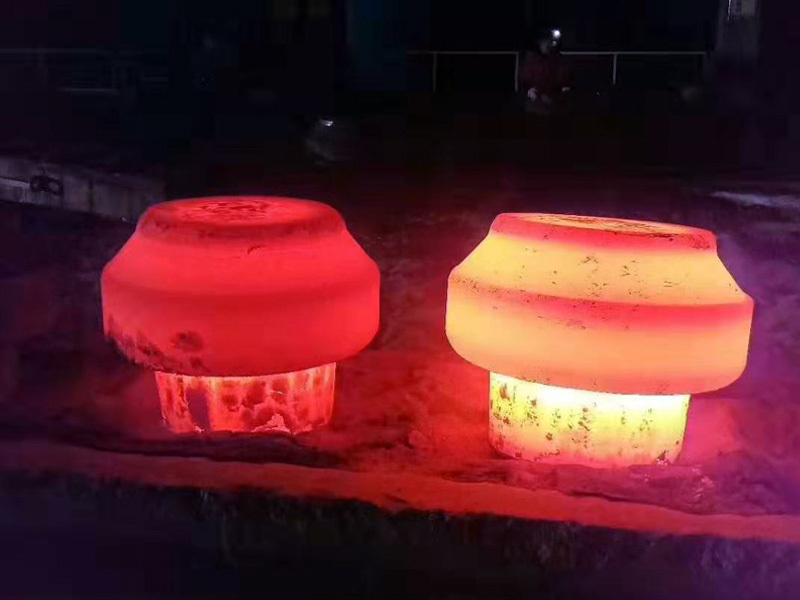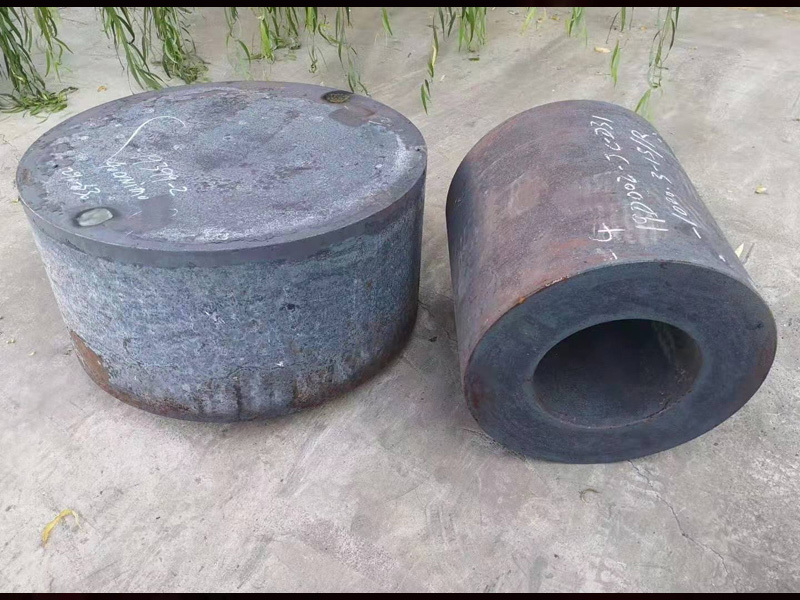Analysis of Surface Cracking of Bearing Steel Forgings
Release time:
2022-07-28
The common cracks of bearing steel forgings are mainly divided into two categories: one is the cracks caused by the defects of raw materials, and the other is the cracking of forgings caused by improper forging process. Among them, the cracks caused by raw material defects mainly include raw material surface cracks, non-metallic slag, subcutaneous bubbles, white spots and shrink tube residues, etc., while the forging cracking caused by improper forging process mainly includes forging folding, forging overburning, forging wet cracking and forging tearing. Due to the different causes of the formation of cracks, there are some differences in the morphology and microstructure of the cracks, and the selected analysis methods and means are also different. Therefore, what kind of analysis idea should be taken for a certain case and what kind of analysis method should be selected in order to get the analysis conclusion quickly, accurately and economically, which is a common issue faced by the failure analysis work. 0350mm GCrl5SiMn electroslag steel forging materials produced by a company are used to forge bearing rings with a blanking length of 570mm. In the subsequent heating and forging process, it is found that the forging surface of the material is cracked along the axial direction, with a proportion of about 10%. Due to the large size of the forging, after annealing, two samples are cut out for inspection and analysis, with numbers of 1# and 2# respectively#.

1 Overview
The common cracks of bearing steel forgings are mainly divided into two categories: one is the cracks caused by the defects of raw materials, and the other is the cracking of forgings caused by improper forging process. Among them, the cracks caused by raw material defects mainly include raw material surface cracks, non-metallic slag, subcutaneous bubbles, white spots and shrink tube residues, etc., while the forging cracking caused by improper forging process mainly includes forging folding, forging overburning, forging wet cracking and forging tearing. Due to the different causes of the formation of cracks, there are some differences in the morphology and microstructure of the cracks, and the selected analysis methods and means are also different. Therefore, what kind of analysis idea should be taken for a certain case and what kind of analysis method should be selected in order to get the analysis conclusion quickly, accurately and economically, which is a common issue faced by the failure analysis work.
0350mm GCrl5SiMn electroslag steel forging materials produced by a company are used to forge bearing rings with a blanking length of 570mm. In the subsequent heating and forging process, it is found that the forging surface of the material is cracked along the axial direction, with a proportion of about 10%. Due to the large size of the forging, after annealing, two samples are cut out for inspection and analysis, with numbers of 1# and 2# respectively#.
2 Analysis of ideas and method selection
According to the appearance of forging cracking, it is believed that the possible factors leading to surface cracks are surface cracks of raw materials, subcutaneous bubbles, turning skin, forging over-burning and surface non-metallic slag inclusion. Each factor may cause the crack morphology characteristics, microstructure morphology and the analysis method should be used.
Through the comprehensive judgment of the above inspection and analysis results, it is finally determined that the main cause of forging surface cracking may be one, or two or more primary and secondary factors.
3 Inspection and analysis
The 1# and 2# samples were cut laterally along the defect by line cutting method, and were observed under a metallographic microscope after grinding. It was found that there were gray foreign bodies on the surface and sub-surface of the two samples, and the sample showed a dot-like distribution of inclusions; the 2# sample showed a large-size block morphology. Considering that the two samples have been annealed during sampling and gray foreign matter is found around the defects, decarburized layer inspection is not carried out.
4 Analysis of results
According to the above observation, inspection and analysis, it is concluded that no abnormality is found in the microstructures and forging quality of the bearing steel forgings submitted for inspection, which indicates that the surface cracking of the forgings has nothing to do with the microstructures and forging process, excluding the possibility of subcutaneous bubbles, tumbling and forging over-burning; the defective surface layers of 1# and 2# forgings all have different degrees of inclusions and slag inclusions, and their main components are oxides of iron, it belongs to metallurgical defects. The existence of a large amount of slag inclusions destroys the continuity of the material, its strength and toughness are low, and the flooding distributed on the surface of the material during forging is extremely prone to cracking. Metallurgical defects exist on the surface of bearing steel forgings submitted for inspection-large-size slag inclusions, which are also the main reason for surface cracking of the material section during forging.
Taking the method of eliminating and confirming at the same time, it is determined that the metallurgical defects on the surface of the bearing steel forgings for inspection are the main reason for the cracking of the surface of the material section during the forging process. The exclusion process of cracks on the surface of the raw material is omitted in the case, because a large number of gray foreign bodies of different shapes and colors have been found in the metallographic examination process, which can basically rule out the possibility of their existence, and only a qualitative analysis of them is required. An analysis of the recommended ideas for surface cracks similar to this case.
More information








